
Images From the Weekend’s Blustery Rolex Big Boat Series
From sunburn Thursday to windburn Sunday, the 60th Rolex Big Boat Series delivered thrill rides aplenty on September 12-15. Hosted by St. Francis Yacht Club, this regatta’s humble origins date back to 1962, when nine boats competed for the St. Francis Perpetual Trophy. This year, 70 boats turned out for a rip-roaring good time, vying for 10 special trophies and two Rolex wristwatches. Organizers set up two starting areas: the North Course and the Treasure Island Course. They used windward marks as far west as Point Diablo, on the ocean side of the Golden Gate Bridge. For one of the in-the-Bay windward marks, they placed a MarkSetBot southeast of Sausalito’s Point Cavallo.
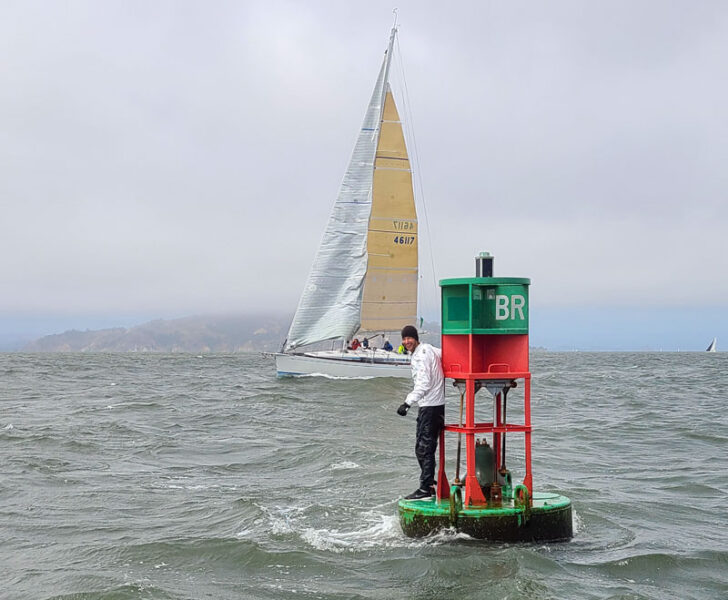
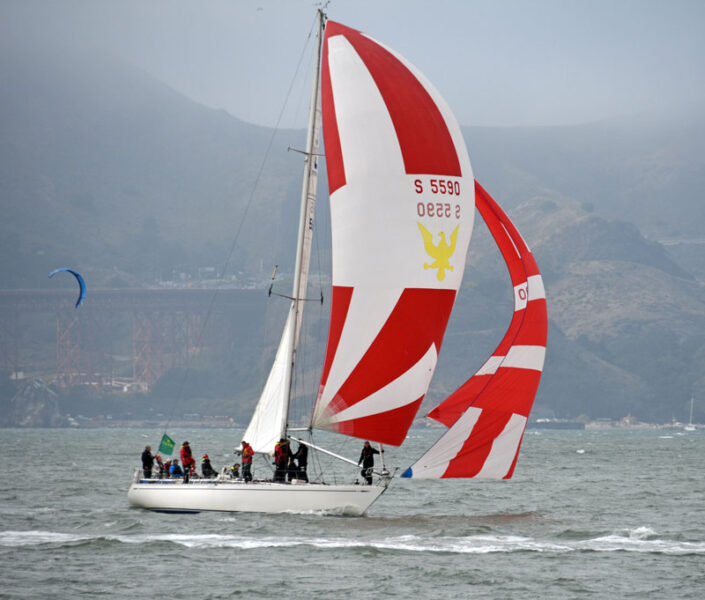
The racing is epic, but so are the parties, a good opportunity to exchange sea stories with friends and rivals.
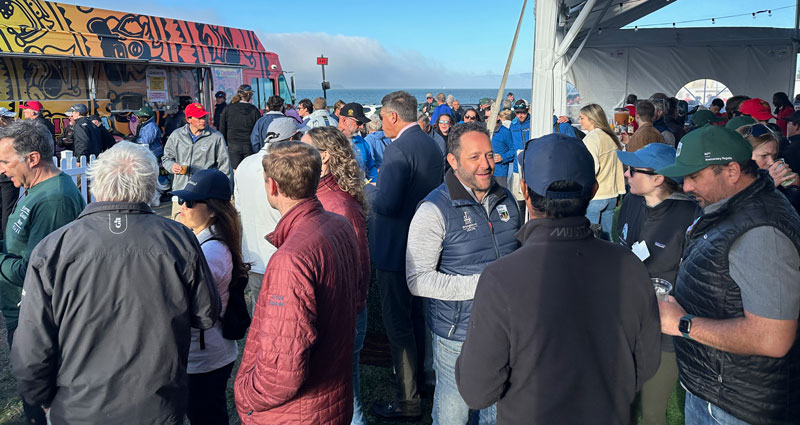
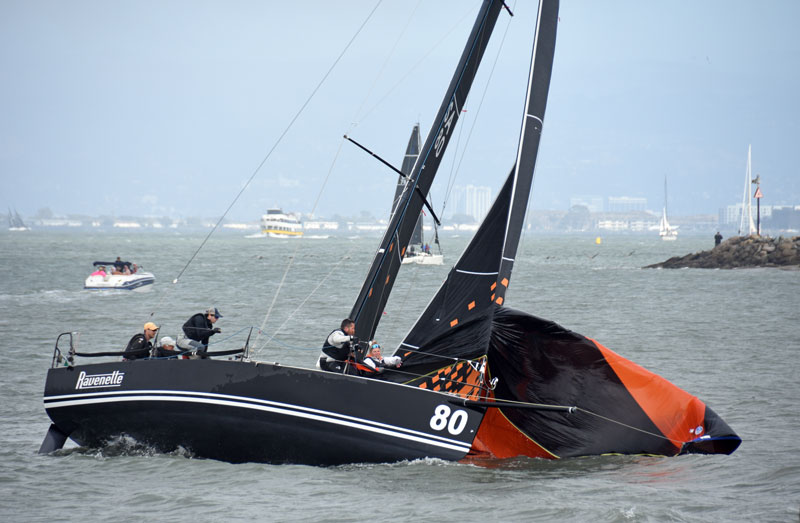
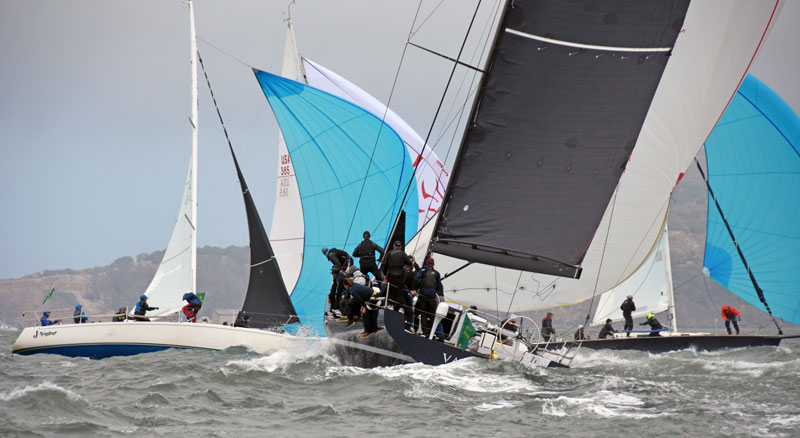
In the October issue of Latitude 38, coming out on Tuesday, October 1, we’ll feature photos and success stories from the winners in each division.
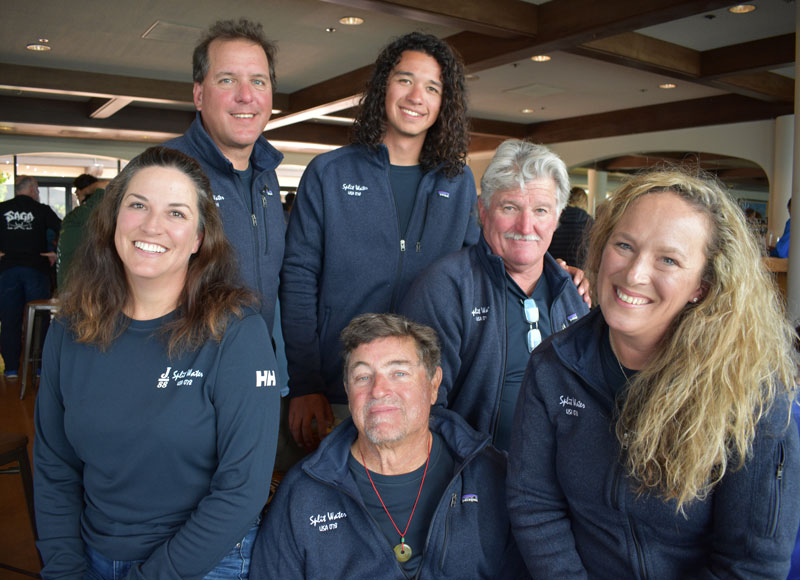
In the meantime, check out results, photos, videos and news reports at https://rolexbigboatseries.com.
Update: The sailor in the first picture recorded a video about his off-boat excursion. Yes! he was wearing a life jacket. View the video here. (The image below is a screenshot from the video.)
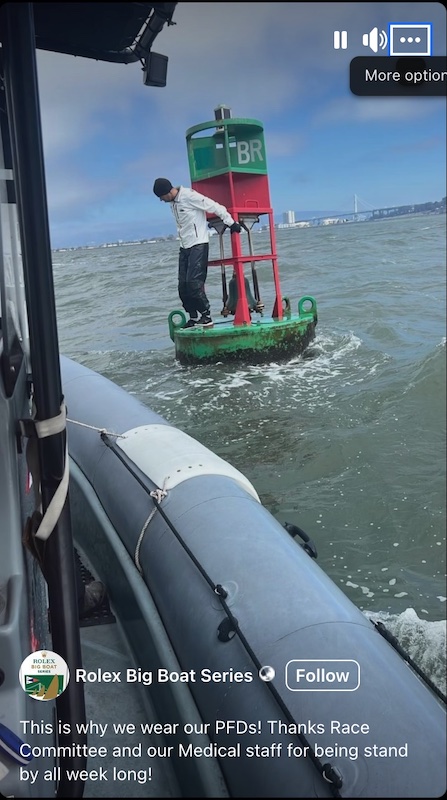
Oakland’s Austin Sperry and San Anselmo’s John Kostecki Win Star Worlds in San Diego
It was a Star Class all-star and certainly a family affair in San Diego, CA, as Austin Sperry and San Anselmo’s John Kostecki (JK) knocked off the Cayard clan by the narrowest of margins to win the event. Danny Cayard finished second overall with Will Stout, while his father Paul Cayard finished fourth in a very competitive Star World Championship.
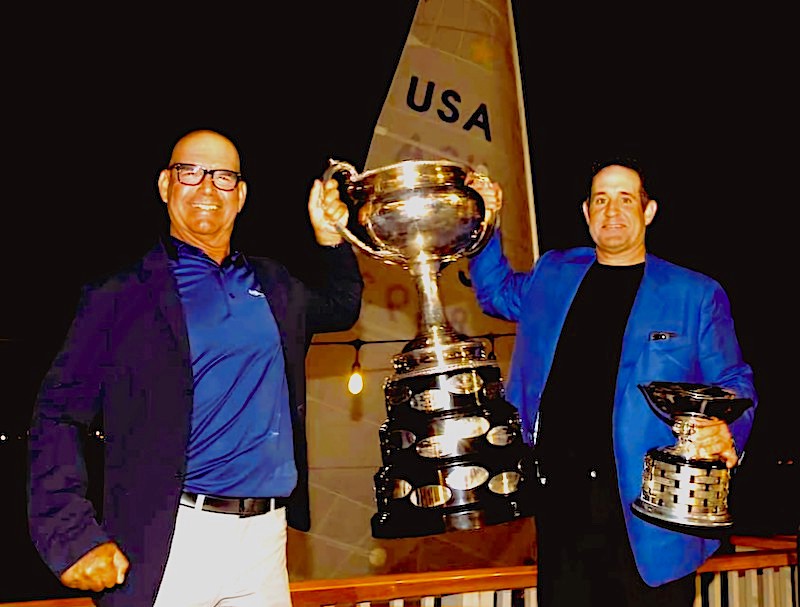
With a long and storied Star history, the San Diego Yacht Club and the host city pulled out all the stops in an event where it ended up all on the line until the very last leg in the last race. Sperry and Kostecki rounded first at the second top mark, but then saw the Argentine brothers Leandro and Lucas Altolaguirre overtaking them to capture the win, but not the championship.
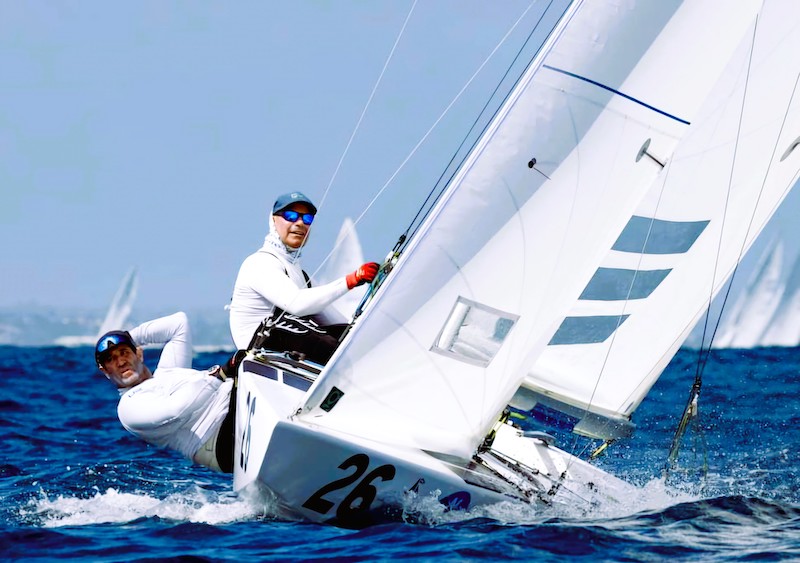
“We won this with a lot of thirds; it is still hard to process, I have to thank JK and the team for making me achieve this life dream. It’s been 30 years in the making; it just feels so special. This is for all the guys I sailed with growing up and [who] helped me become the sailor and the man I am,” Sperry said.
“We sailed a great race today; we needed to. We had a great start, went fast, we had some luck with the wind shifts, and it all just came together, which is what you need to win a World Championship,” Kostecki said.
JK has been part of two winning America’s Cup teams. He won a silver medal in the 1988 Summer Olympics in the Soling class, as well as winning the Volvo Ocean Race in 2001-02 on Illbruck Racing. He has now won his 17th world championship title.
“It’s tough every day here,” Sperry added.
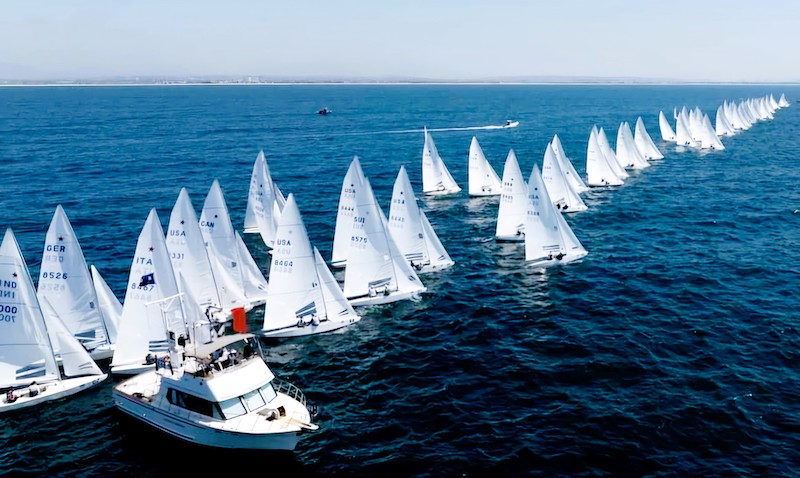
It was consistency that kept Kostecki and Sperry in the leaderboard mix, as Kostecki noted after a challenging race on Day 3.
“Another tricky day today; every day has been not typical San Diego: lot of changes going on during the day. We had a really good last beat and we were able to pass a bunch of boats,” Kostecki said. “We are in the middle of the championship, and we are right there, ready to give it all in the last three races. It’s hard; there are a lot of great teams out there!”
Race PRO and Star Class Regatta Director Tom Duggan commented, “It has been a challenge all week between the different wind directions, the current and the eagerness of the fleet at the starts. We had to stay south of Point Loma to have steadier breeze and not too far out to avoid the strong coastal current, but we are happy of the outcome.”
After taking second place, Danny Cayard, the family’s third-generation Star sailor said, “It was a long week of challenging conditions and it came down to the last race between six boats. It was a great way to end this championship really, open until the last leg.”
“We had a tough finish to the championship and this race. We started well, stayed in the shifts in the first upwind and then had an excellent downwind, conquering the first position. In the second upwind we lost two boats, and in the last leg, we were fast and won the race, but not the championship,” Lucas Altolaguirre declared. “We had a fantastic week here. We are very, very happy; everything was just perfect.”
Though not winning the championship, Paul Cayard, Star Class president and two-time Star World Champion, was proud of his son Danny. “It is disappointing to win three races and not the World Championship. In race two and race five I made some mistakes, just big mistakes … and finishing more than 10th, you kind of need to stay in the top 10. If you’re not having a great race, but still sail well and are able to get back to seventh it is OK. [I] just had too many points and the other guys sailed very consistently, and I’m super-happy for my son Danny, who finished second.”
San Diego has now hosted the Star Worlds nine times and is home to a cradle of GOATs in its ranks, like none other than Lowell North, Malin Burnham and the legendary Dennis Conner, who have mixed it up and knocked them off Point Loma over the decades.
“Standing with the 100-year-old World Championship Trophy makes you realize once again the great history of the Star Class and the big legacy we have to honor as Star sailors, and for me, especially as class president,” Cayard said. “This trophy was won 15 times by members of the San Diego Bay fleet, The center of the SDYC burgee has a red star as well, and that’s the emblem of the Star Class, which highlights the tight link between us!”
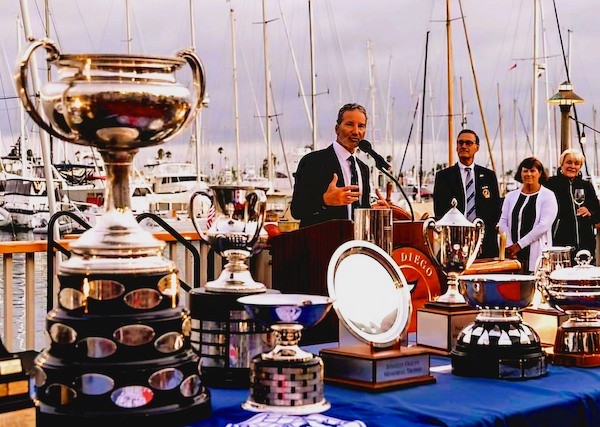
Sixty-four teams with 128 sailors from 14 countries came to San Diego, which hosted the Star World Championships in 1938, 1940, 1958, 1961, 1969, 1973, 1994 and 2013. The Star Class was founded at Port Washington, Long Island, in 1911, when initially 22 Stars were built. The Star was introduced in the 1932 Olympics in Los Angeles and remained as a class in the Games until London in 2012. It has over a 160 local fleets in 27 countries. Approximately, 8,000 Stars, give or take, have been built to date.
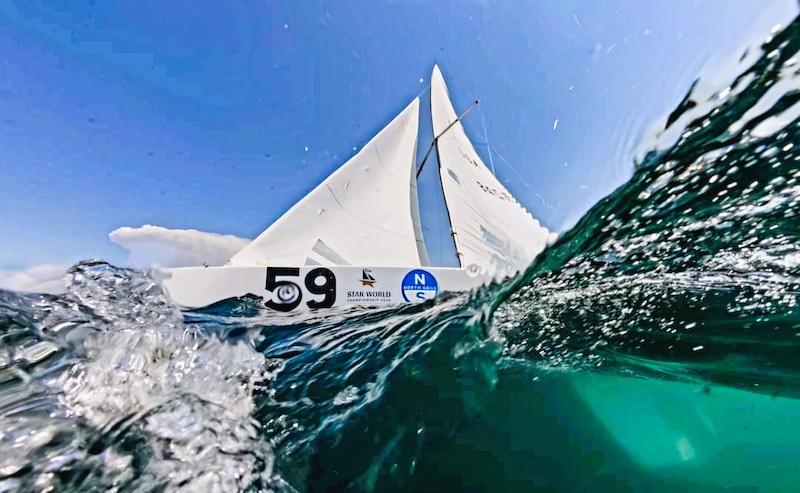
Wouldn’t it be miraculous if the Olympics would bring the Stars and the stars back to Los Angeles in 2028?!
KKMI Gets To the Bottom of Your Boating Needs
Baja Ha-Ha XXX Fleet Members Smile for the Camera
In the current September issue of Latitude 38 we featured a selection of the wide variety of cruisers who are heading toward San Diego for the start of the 30th annual Baja Ha-Ha. Below we feature two more who will be joining the over 120 boats signed up for this year.
Kalewa — KM Design 50 Cat
David & Emily Cuevas
Nawiliwili, Kauai / St. Thomas, USVI
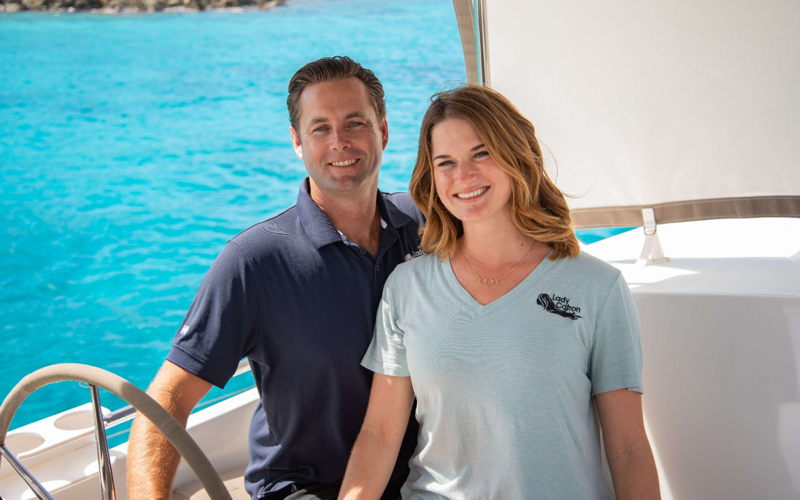
David, 38, is a charter boat captain, while spouse Emily, 35, is a chef. The two will doublehand.
The couple started sailing together eight years ago, the day after they met at a happy hour. Their first sail, out of Hanalei Bay aboard David’s Hobie 16, didn’t go as David planned, as they flipped and David lost his phone. But it was so much fun that Emily was hooked. The couple have owned three boats together: a Nacra 20 beach cat in Kauai, a Peterson 44 shortly after they married, and Kalewa, which they acquired a year ago. Designed and built by Kevin Millett of Kauai, Kalewa has already done four Ha-Ha’s with Kevin at the helm. The couple accurately describe their cat as “fast, sexy, and one-of-a-kind.”
She’s not as one-of-a-kind as she originally was, however, as her original troublesome electric motors have been replaced with diesels. But she still doesn’t have lifelines.
Multiple-Ha-Ha vet Kevin is currently awaiting the construction of a very high-performance 51-ft cat in Australia, the delivery of which is currently running six months late, and counting.
David and Emily have crossed the Pacific three times, the longest taking them 21 days. After the Ha-Ha, they hope to find surf on the way back up the Baja coast, after which it will be time for them to head to work in the Caribbean. The couple run luxury charters aboard Plus 10, a Fountaine Pajot 59 cat.
The couple’s dream destination is the South Pacific, while Kalewa is their dream boat — at least until they see Kevin’s new boat. Up until mid-August, their nautical heroes were explorer Ernest Shackleton and wacko Captain Ron. But both have been displaced by San Diego-based Annie Gardner, a lifelong sailor supreme on everything from sailboards to the America’s Cup and a charismatic instigator of sailing adventures, particularly for women.
Their favorite quote is, “If you’re not living on the edge, you’re taking up space.”
Freeranger — Beneteau 50 (W)
Larissa Clark & Duncan Copeland
London, England / British Columbia
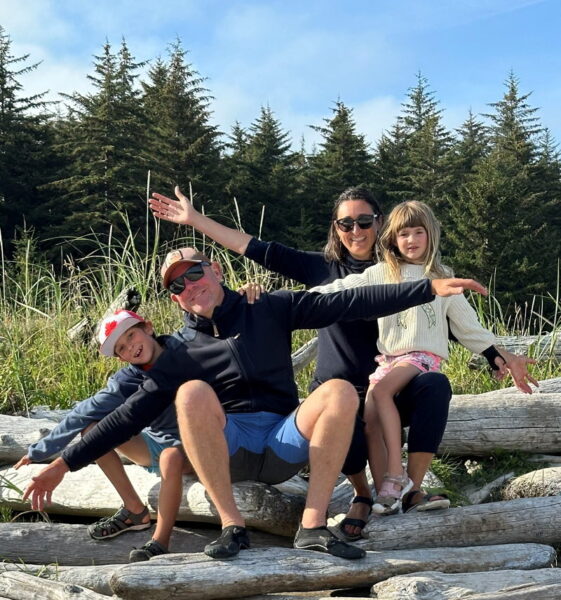
Larissa is a communications director, while spouse Duncan, 48, is an executive director.
They will have their two offspring aboard: Eden Copeland, 8, a student of life; and Skye-Elizabeth Copeland, 6, also a student of life. Both have been sailing since they were babies.
There will also be two other adult crew: Theone and Alistair Mole, old friends who are experienced ocean sailors.
Duncan grew up sailing. Indicative of the importance of sailing to the Copeland family, he was taken straight from the hospital nursery to the family boat. Between the ages of 9 and15, he was raised aboard the Beneteau 38 Bagheera, a boat featured in several books that his parents Liza and Andy published during a circumnavigation.
Since then, Duncan has spent time delivering boats in the Med and across the Atlantic, cruised extensively in various parts of the world aboard Bagheera, which is still in the family, and sailed all over Sweden and Norway.
For over 20 years, Duncan has worked for marine conservation not-for-profits, particularly on the issues of illegal fishing and associated crimes. He has worked in Africa, Asia and South America with stakeholders from community to ministerial level and across fisheries-enforcement agencies. He is a co-founder of, and until recently, spent 11 years as the executive director of TMT, an international NGO working with developing coastal states to combat illegal fishing. He is a United Nations Ocean Panel expert, sits on the advisory board of the University of British Columbia’s Sea Around Us, and is a member of the Royal Vancouver YC, the Ocean Cruising Club, and the Bluewater Cruising Association. Duncan’s longest passage as an adult has been from Guinea-Bissau, which you’ll remember from your junior high geography class is in West Africa, to Brazil.
Larissa grew up in London, rather far from the open ocean, and thus didn’t find her sea legs until age 30 during a tall ship passage from Spain to Brazil. She has since cruised in British Columbia and Scandinavia with her family. Inspired by her transatlantic tall ship experience, she founded the Another World Adventures travel agency to help others realize their own unusual travel ambitions. She runs the business remotely with an international team. Larissa is a member of the Explorers Club and the Bluewater Cruising Association, and trustee of Women in Ocean Science.
Joining Freeranger for the Ha-Ha will be Theone (Theo) and Alistair (Ali) Mole. Theo grew up living aboard and cruising the British Columbia coast on the family sailboat. In her 20s, Theo entered the private yacht industry, where she met the dashing Scot, Ali, who was trying his hand as crew. Together, they worked for many years as a very successful partnership in the private yacht industry, based in Europe but working throughout the world. Now based in Palma de Mallorca, Ali continues to skipper large private yachts, while Theo has become a qualified sommelier and offers wine experiences in Spain and internationally.
“Our plan is to enjoy a great family sailing adventure, have a lot of fun along the way, but also voyage with purpose,” the Copelands say. “So we have set up Free Range Ocean, www.freerangeocean.org, a nonprofit to use adventure sailing, citizen science, and storytelling to inspire action for a healthy ocean among boating and coastal communities. We invite everyone to join our efforts.”
Larissa’s favorite quote is, “The pessimist complains about the wind, the optimist hopes it will change, while the realist adjusts the sails.”
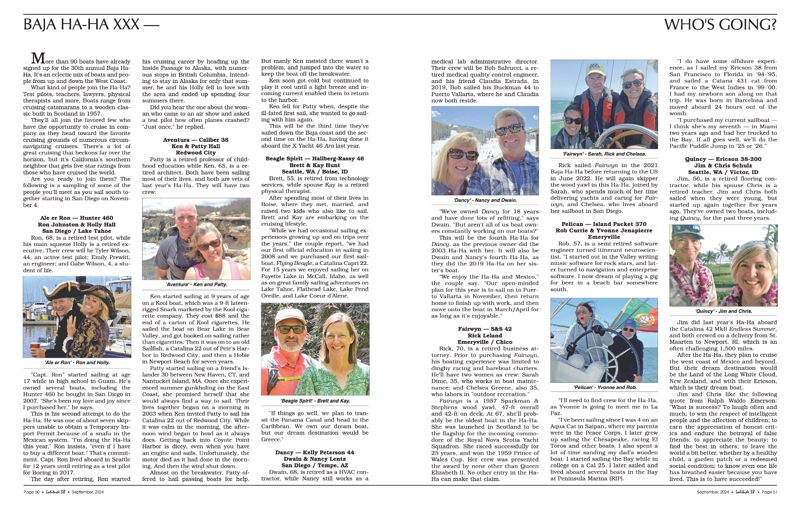
The US “epidemic of loneliness” won’t be felt by the fun, friendly and adventurous fleet that sails south together in the Baja Ha-Ha. It’s amazing how “getting away from it all” brings so many people so close together. It’s one of the great attributes of the Baja Ha-Ha and sailing in general.
Ruby Gates — Alone Across the Pacific
As far as I know, I am the only woman to have sailed singlehanded from Mexico to French Polynesia in 2024. I spent 30 days at sea talking to myself, scolding birds who pooped on my deck, shushing fear, dancing to the moon, and mistaking stars for ships. I ate when I liked, slept when I liked, and read a big, thick book. I argued with myself about tactics and congratulated my equipment on a job well done. When it rained, I took a shower. When the wind died, I rested. When it stormed, I cursed.
I did all of this as I steadily made progress across 3,000 miles of the South Pacific.
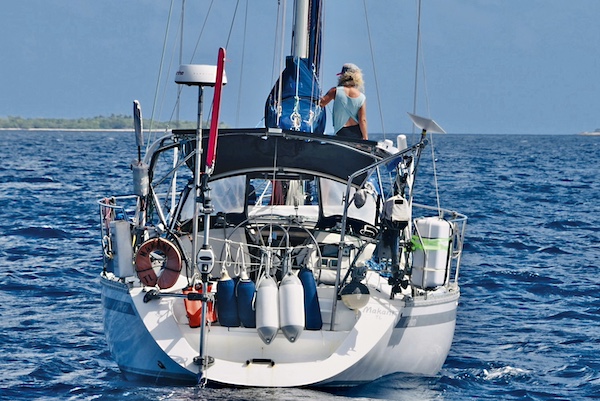
I had been sailing up to this point for almost 10 years, and singlehanding for two. I bought my Jeanneau 39, Makani, in Mexico and sailed her up and down the Sea of Cortez — and always south to Zihuatanejo for Guitar Fest in early March. But I was getting weary of Mexico. It wasn’t long before the call of French Polynesia caught my ear.
So early one morning in April 2024, I hauled anchor and set sail for the Marquesas. I was fully provisioned and fueled up, had parts for my parts, and held enough optimism to beat a tough day ….
The sea swells argue with the currents flowing off Baja, and my first few days have me cursing more than praising the seas. Eventually, I melt into the rhythm of the rolls and start realizing exactly what I have committed to. This ain’t your mama’s Sunday trip to the farm. No, ma’am — this is pure solitude against the backdrop of seas that will eat you for breakfast. I was well prepared for the conditions, but my sail to French Polynesia was to take some strange turns I couldn’t have prepared for.
Not more than 10 days into my passage, I see what looks like a windsurfer about 100 meters to port. The skies are gray and the seas heavy, with huge swells growing and receding like a velvet curtain trying to smother my stern. The closest land is more than 1,000 miles away, and the nearest sailboat 50 miles to my southwest. I message my brother, who is my emergency contact, to see if someone is trying for a windsurfing world record — upwind across the Pacific. I can’t otherwise explain what I’m seeing!
The “windsurfer” circles behind me and dips into and out of sight, riding the swells deep off my stern. I freeze — is this a bold and clever pirate with a mothership nearby? A hallucination? Whatever it is, it’s eerie and out of place. I squint my eyes; I can’t even see a human on board that thing!
It finally shows up on AIS as an “un-manned vessel” — and eventually I receive information that it’s a sailing drone, remotely controlled from some cozy spot in California. Who’da thunk? I’ve never seen a sailing drone, and I quietly applaud its pluck and courage to be out here, sailing upwind no less, a smudge on the heaving swells behind me. My growing panic over newfangled pirate strategies subsides. I feel like an ancient sailor colliding with a taunting time traveler from the future as I sail the same seas vessels have covered for hundreds and hundreds of years — with a sailing drone. Huh.
I sail on and eventually slip into the Intertropical Convergence Zone (ITCZ). Squalls hound me. I spend a lot of time trying to avoid them, even slowing down hoping the ITCZ thins out a bit. But my sophomoric strategy doesn’t work, and I find myself encountering squalls so often I become used to them: 30-knot winds at night with seas too dark to see are hallmarks of my passage. So is my swearing.
At first I try to avoid them, but learn quickly they are mostly unavoidable. I develop a quick-draw sail plan before they catch up to me, often pulling the reefing trigger moments before I normally would have even thought about reefing. I’m getting good!
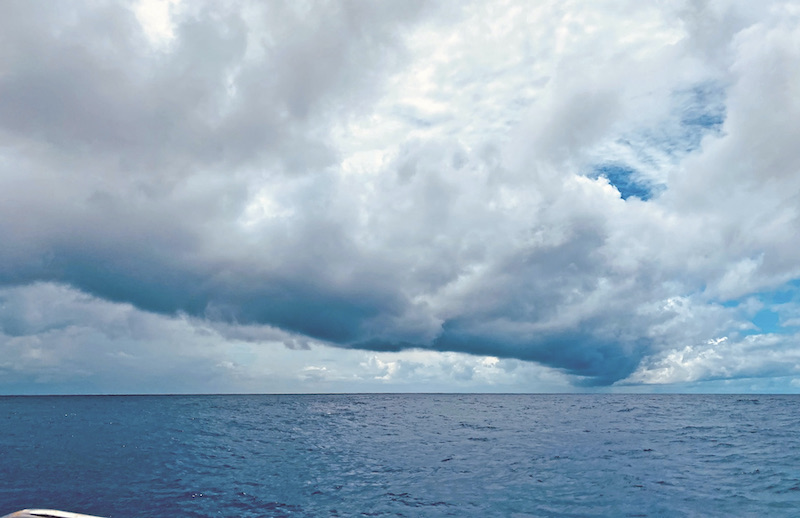
One night I’m hove-to, squalls on three sides of me. The sun is setting, bruising the sky in deep grays and purples, leaving an ominous, lingering green tinge. Suddenly I see a boat on my AIS! I haven’t seen another sailboat in weeks, and my delight is that of a 6-year-old surprised with a petting zoo in her front yard. Eagerly, I hail the approaching vessel.
My excitement soon turns to concern, as the boat coming straight at me is not acknowledging my hails. The great South Pacific shrinks quickly when a boat is going 7 knots and has you in their crosshairs. I hail them again, and again, no response. By now the sky has darkened into a thick soup and visibility is poor. The squall to the east begins pushing toward me and rain pelts my deck. The vessel is coming closer, quickly.
Continue reading in the September issue. You’ll be pleased that you did!


